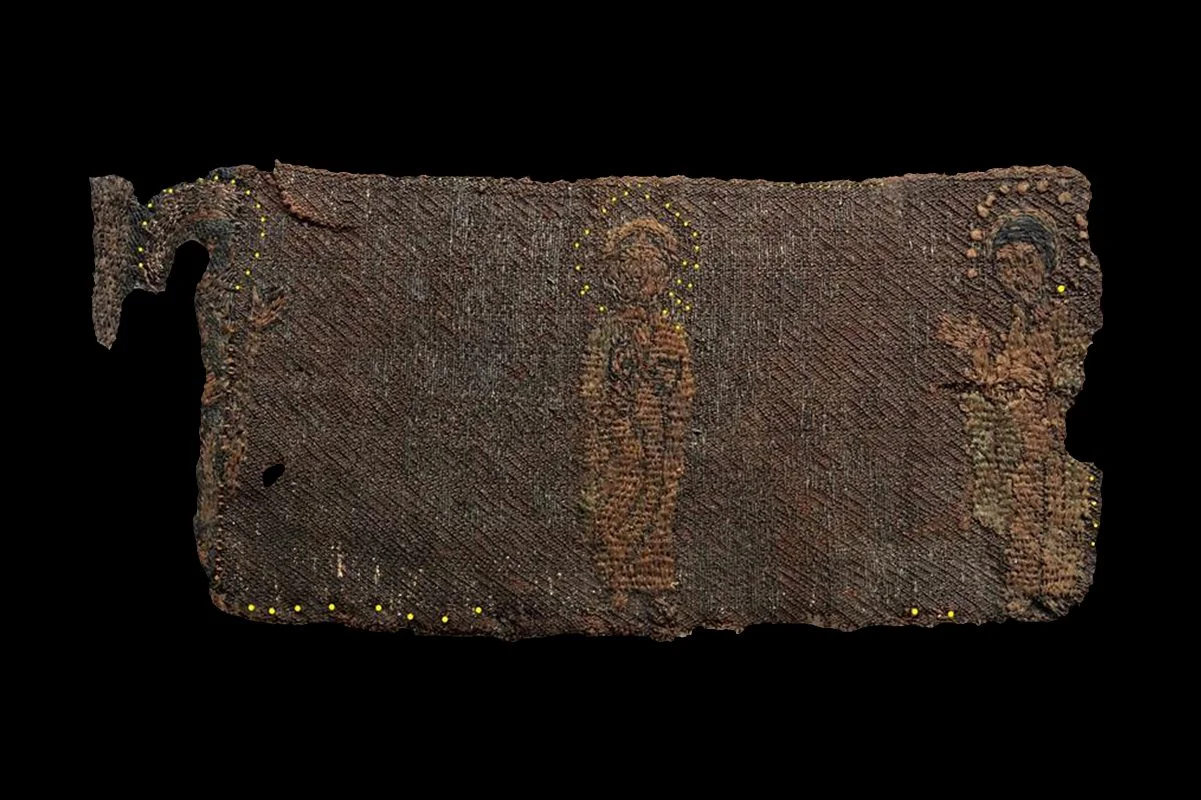Archaeologists from the Institute of Archaeology of the Russian Academy of Sciences have unearthed a rare embroidered Deisis depicting Jesus Christ in a medieval burial ground.
The discovery was made during construction works for the Moscow-Kazan high-speed highway, where archaeologists found a medieval settlement covering an area of 8.6 acres and an associated Christian cemetery.
Excavations have exhumed 46 graves, one of which contained a woman aged between 16 to 25 years of age, who was buried with an embroidered Deisis depicting Jesus Christ and John the Baptist.
In Byzantine art, and in later Eastern Orthodox art generally, the Deisis is a traditional iconic representation of Christ in Majesty or Christ Pantocrator. In traditional examples, Mary (mother of Jesus) and John the Baptist are shown facing towards Christ with their hands raised in supplication on behalf of humanity.
The archaeologists suggest that the embroidered fabric was once a headdress made from a dark silk samite. Similar examples have been found at the Ivorovsky necropolis near Staritsa depicting the image of Michael the Archangel with a spear, or the embroidered faces of saints and crosses found in the Karoshsky burial ground in the Yaroslavl region.
The fabric measures 12.1 cm long by 5.5 cm and is made up of two parts connected by a vertical seam consisting of a woven gold ribbon with a braided pattern. The lining of the fabric has not survived; however, a microscopic inspection has found remnants of birch bark and needle punctures along the lower and upper edges.
The central figure on the fabric depicts a frontal image of Jesus Christ in a blessing gesture, while on the right is John the Baptist in a prayerful pose facing him. The inspection has revealed that on the left was once another figure, likely Mary, however this figure is now lost.
Speaking on the discovery, the researchers commented that the: “highest level of craftsmanship, jewellery subtlety and elegance went into making this miniature embroidery.”
Institute of Archaeology of the Russian Academy of Sciences
Header Image Credit : Institute of Archaeology of the Russian Academy of Sciences







